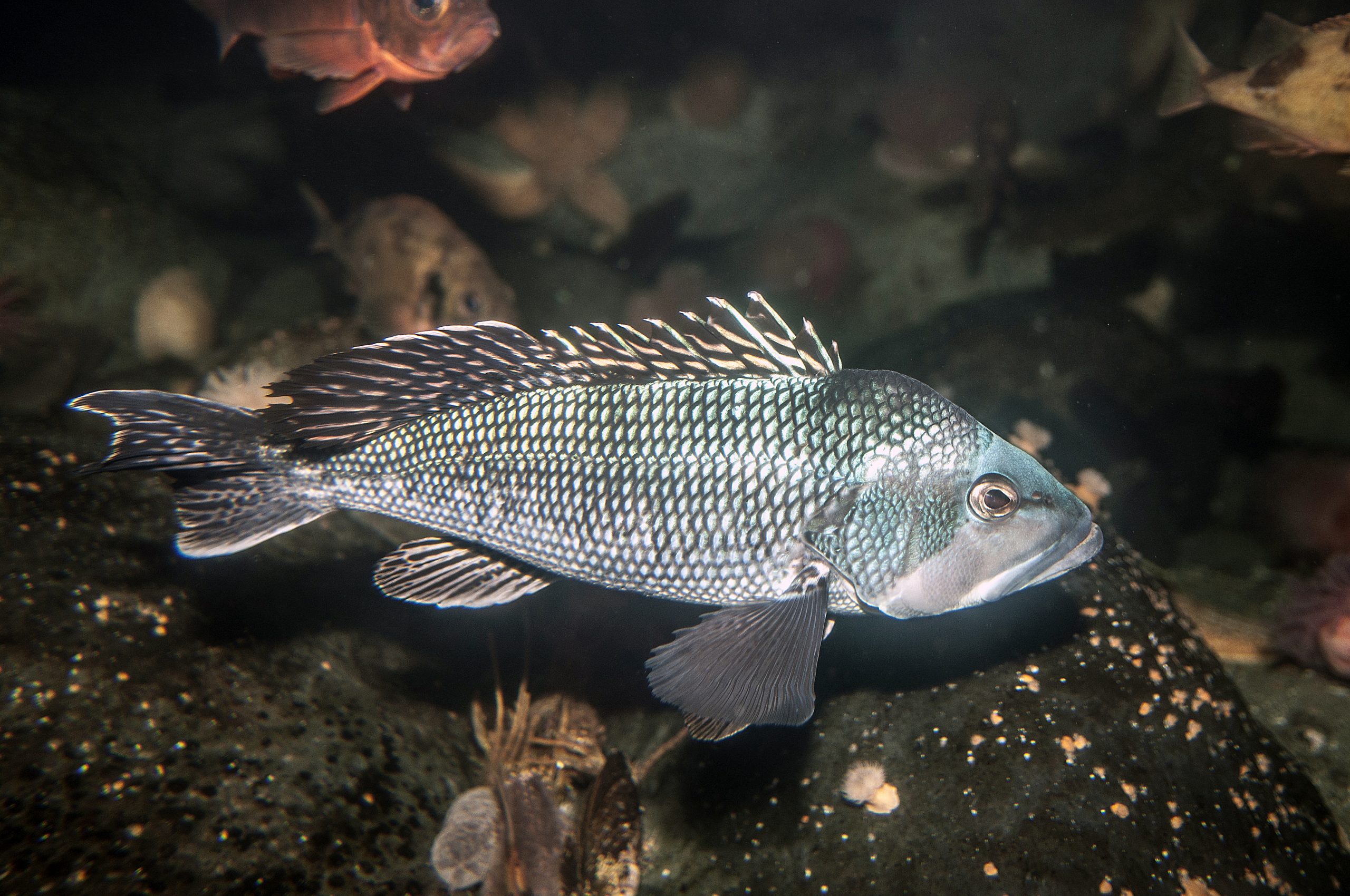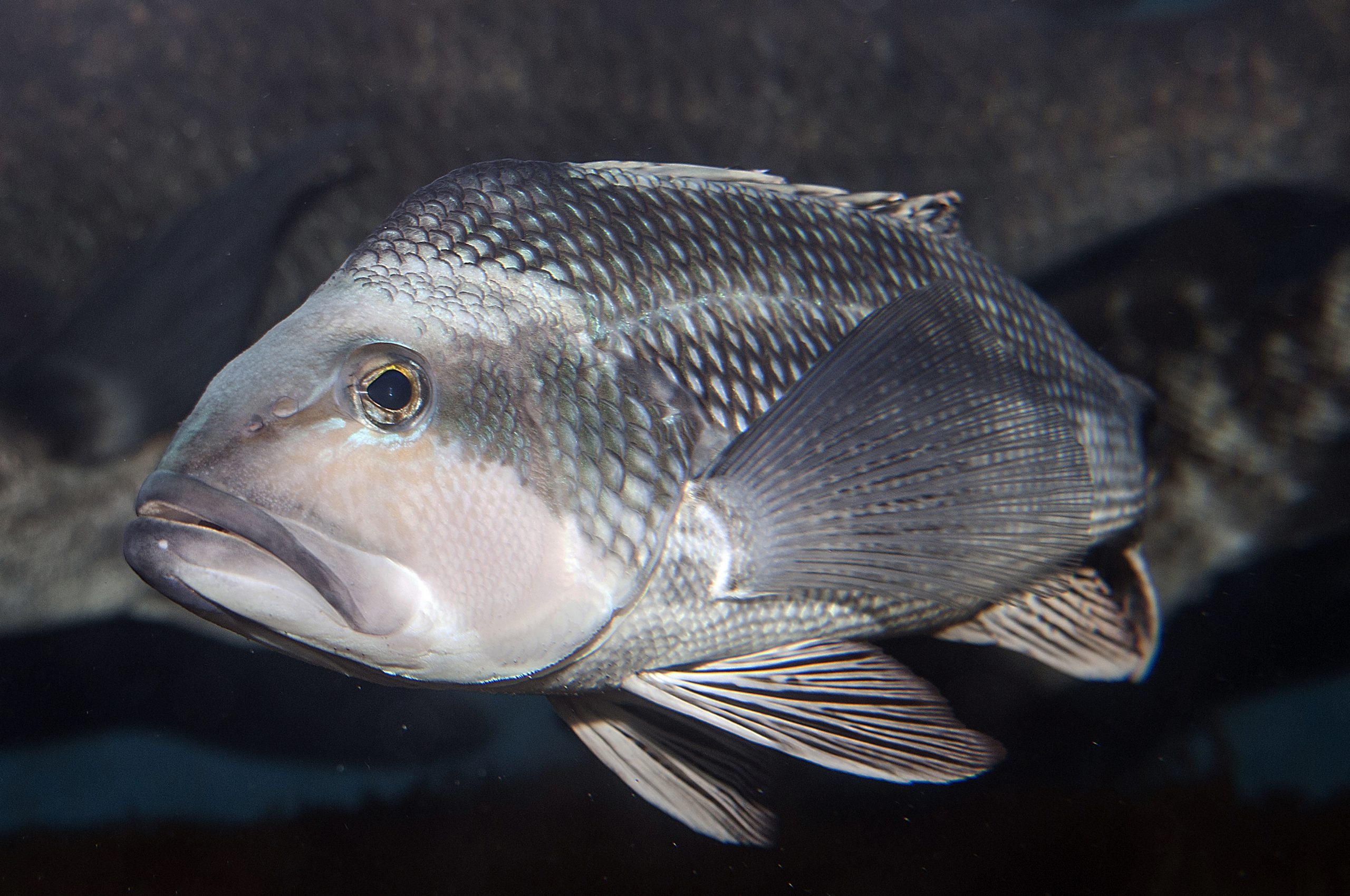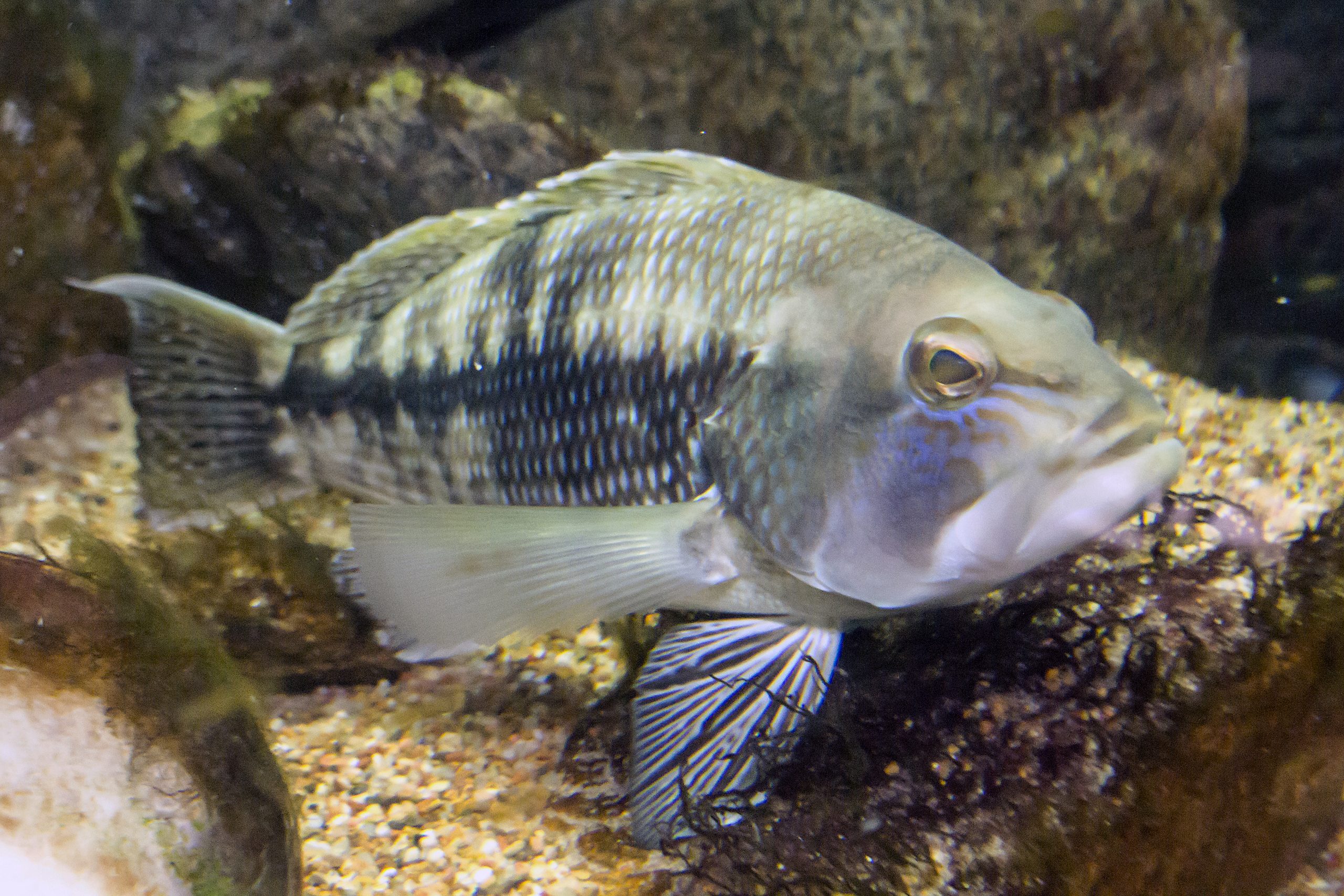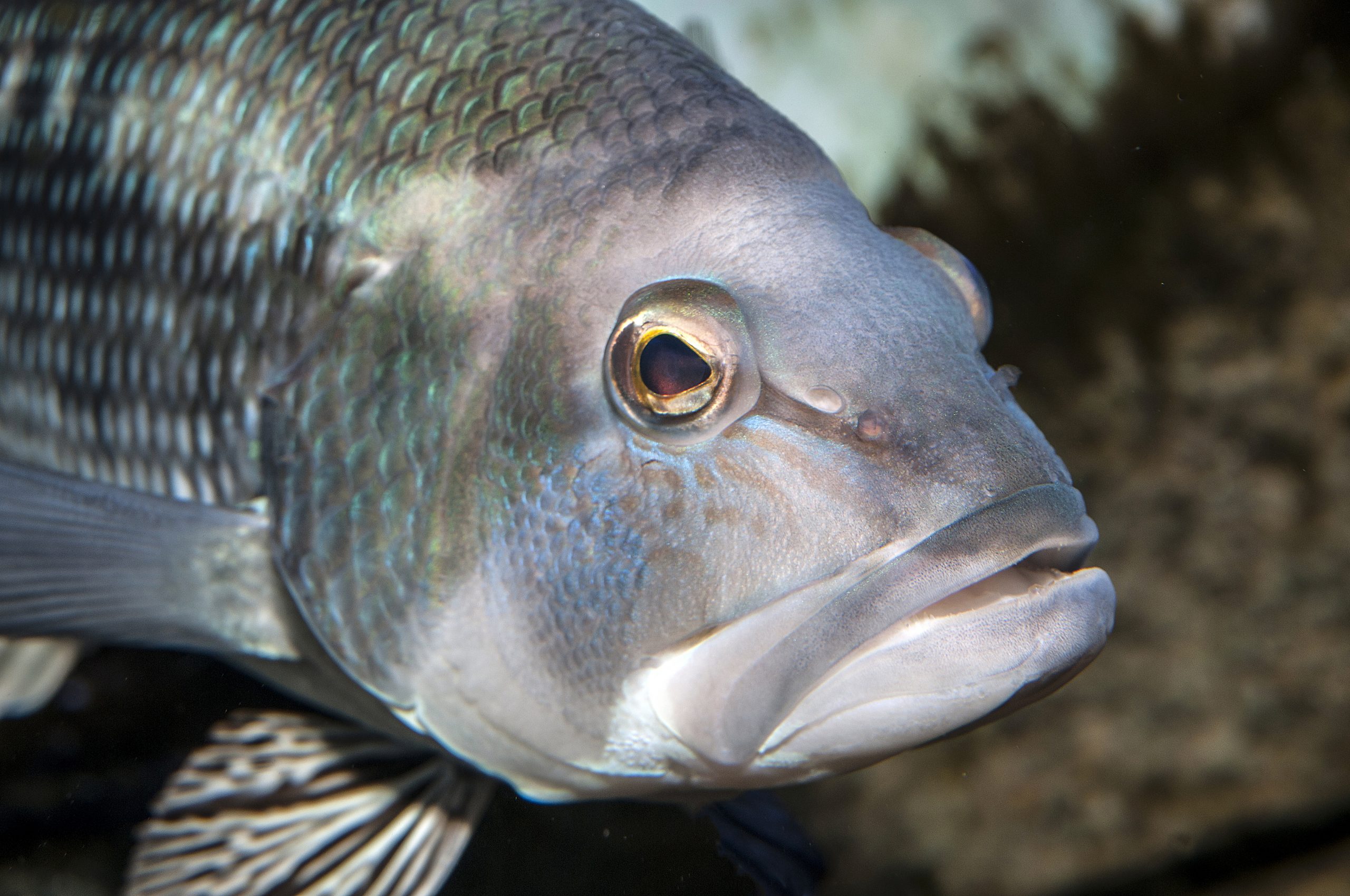
When I first think of saltwater bass, striped bass immediately come to mind.
I never would have thought as a young scuba diver some 40 years ago that I would be swimming with and taking pictures of a relatively unknown ocean bass called the black sea bass.
Supporter Spotlight
This species is breathtaking and can be observed in a variety of color patterns. The flowing fins make me think I am swimming underwater with royalty.
Black sea bass are found from the Gulf of Maine south to the Gulf of Mexico. This species is made up of two genetically separate stocks, with Cape Hatteras as the border between the two. Because of the divide and two unique populations, black sea bass are divided north and south of Cape Hatteras and managed separately.
In North Carolina, this species is also known as blackfish, Atlantic sea bass, bass, rock bass, old humpback and pinbass. They are sometimes confused with black drum, bank sea bass and rock sea bass.

“Bigger fish are usually black, while smaller specimens look like they are a dusky brown. Visible scales are paler, making the black sea bass appear as if it is barred with a lot of dots appearing along the full length of the fish. The bottom of the sea bass is lighter in color than its sides,” said McLean Seward, fisheries biologist with the North Carolina Division of Marine Fisheries.
The fins are dark and the dorsal, or top fin, has a series of white bands and spots. The upper part of the caudal, or tail fin, ends with filaments trailing off the back of the tail.
Supporter Spotlight
I have seen black sea bass with a wide array of body color, and marking configurations while scuba diving. The only definitive way to positively identify this bass from other South Atlantic sea bass is that all ages of the fish, both male and female, will always have white margins, or markings on the top and bottom of the tail, or caudal fin.
No other saltwater bass in the Atlantic Ocean has the same white markings on their tails.
“In North Carolina, black sea bass will live in and around multi-shaped, hard-bottomed areas, including shipwrecks and reefs. In South Atlantic waters, they are usually found closer to shore, with other tropical reef fish, such as snappers, groupers, porgies and grunts,” said Seward.
Juvenile black sea bass will live in the high-salt, brackish waters of estuaries during the summer months.

During spawning season, males develop an obvious blue hump at the back of their heads on their necks.
“This species of fish are protogynous intersex, meaning that most black sea bass begin their lives as females, and as they grow, and mature they will become males. Scientists are not really sure why this happens, but one educated guess suggests that where males are far less numerous in a spawning group that may be the trigger for a female to switch sex,” said National Oceanic and Atmospheric Administration research fisheries biologist Jennifer Potts.
“Black sea bass will spawn from February through May in North Carolina waters south of Cape Hatteras. Fifty percent of females reach sexual maturity by the time they are 1 year old, and around 5-6 inches in length. Fifty percent of females will make the transition to males, and males when they are 4 years old, and approximately 11 inches long,” said Seward.
When spawning, males seek out schools of females to mate with and aggressively defend their territory, similar to freshwater bass. Depending on their size, females can produce between 30,000 and 500,000 eggs in a spawning season.
“This species grows slowly, and 50% are able to reproduce by the time they reach between 1 and close to 100% by 3 years of age. Females can live to be up 8 years old, while males can live to be up to 12 years old. The South Atlantic Fisheries Management Council, and North Carolina Division of Marine Fisheries states their maximum age is approximately 20 years old, however fish over the age of 9 are rare,” Seward said.
Little skate, spiny dogfish, monkfish, spotted hake and summer flounder all consider black sea bass as their meal.
“Seasonal inshore, and offshore migrations take place along the northern part of the black sea bass’s range above Cape Hatteras north through the Gulf of Maine,” Seward said.
This species will feed on whatever is available, but they prefer worms, crabs, shrimp, clams and other small fish.

Black sea bass can grow up to 24 inches in total length, and weigh as much as 6 pounds. The North Carolina state record is an 8-pound, 12-ounce specimen caught off the Oregon Inlet in 1979.
“NOAA Fisheries, the mid-Atlantic Fishery Management Council and the Atlantic State Marine Fisheries Commission cooperatively manage the black sea bass fishery north of Cape Hatteras, North Carolina,” said Chris Batsavage, special assistant for councils, North Carolina Division of Marine Fisheries, and division representative to the mid-Atlantic Fishery Management Council, or MAFMC, and Atlantic State Marine Fisheries Commission, or ASMFC.
NOAA and the South Atlantic Fishery Management Council, or SAFMC, manage the black sea bass fishery south of Cape Hatteras, he added.
“South of Cape Hatteras, the federal bag limit of black sea bass is seven fish per person, per day. Minimum fish size is 13 inches in total length, not including the filament tail extension. North of Cape Hatteras, the federal possession limit, or bag limit, of black sea bass is 15 fish per person, per day. Minimum fish size is 12.5 inches in total length, not including the filament tail extension,” said Batsavage.
“The federal recreational fishing seasons for black sea bass are Feb. 1-28, and May 15 through Dec. 31,” he said. This is for areas north of Cape Hatteras.
“The commercial fishery for black sea bass north of Cape Hatteras is managed with quotas, trip limits, gear restrictions, and minimum size limit of 11 inches total length,” said Batsavage.
“Commercial fishing of black sea bass incorporates purchase, and sale limitations after a commercial quota cloture. Seasonal commercial black sea bass closures take place under the snapper-grouper fishery of the SAFMC,” said Steve Poland, executive assistant to councils, North Carolina Division of Marine Fisheries.

Commercial fishing south of Cape Hatteras has different rules and regulations under management of the SAFMC, for all areas south of Cape Hatteras.
“Commercial fishing in this region has a minimum size limit of 11 inches total length. There is a limited access permit that is required, and there is an endorsement required to fish with sea bass pots,” said Poland.
“For commercial fishing with hook and line, there is a 1000-pound gutted weight, or 1,180-pound whole weight from May 1 through Dec. 31, and a 300-pound gutted weight, or 354-pound whole weight from Jan. 1 through April 30,” he said.
Fishing with pots has a trip limit of 1,000 pounds gutted weight, or 1,180-pound whole weight. From Nov. 1-30 and April 1-30 each year, it is illegal to use pots in order to possess, or harvest this species nearshore, of approximate depths shallower than 25 meters, or 82.02 feet.
From Dec. 1 through March 31 each year, it is unlawful to use pots to harvest or possess black sea bass inshore of approximate depths shallower than 30 meters, or 98.4 feet.
“Recreational fishing south of Cape Hatteras has a seven fish per person, per day bag limit, with a maximum total length of 13 inches,” said Poland.
“The fishing year for recreational fisherman is now between April 1 through March 31 this year, and open until the annual catch has been met, or projected to be met. NMFS will project the length of the recreational fishing season based on when the National Marine Fisheries Service (NMFS) projects the recreational ACL (annual catch limit) is expected to be met,” Poland said.
The commercial fishing year is from January through December, and it is open all year unless the commercial annual catch limit is met.
“All fish must be landed with heads and fin intact. The use of de-hooking tools when fishing for snapper grouper species is required under current laws. Fishermen are required to use non-stainless-steel circle hooks, either offset, or non-offset is required for all species in the snapper-grouper complex when using a hook and line gear with natural baits,” he said.
Black sea bass are fun to catch, taste great to eat, and more importantly bring some royalty and class to the sea bottom community.








